I Refused to Split My Son’s Inheritance With My Other Son
Did you know that the largest living creature on our planet is a mushroom? I know, your first thought was probably a whale or some large tree, like the Sequoia. Surprisingly, if we look at square footage, the largest single living organism is a species of mycelium called Armillaria Ostoyae or the honey mushroom.
And you can find it in Oregon’s Malheur National Forest. It stretches across 3 square miles! Not only is it the largest, but it’s also thought to be the oldest organism as well, estimated to be around 8,000 years old!
Some scientists believe that mushrooms are intelligent, too. Well, sort of — they don’t have emotions and aren’t actually capable of thinking. But they do have some of the most complex and extensive communication systems in the world.
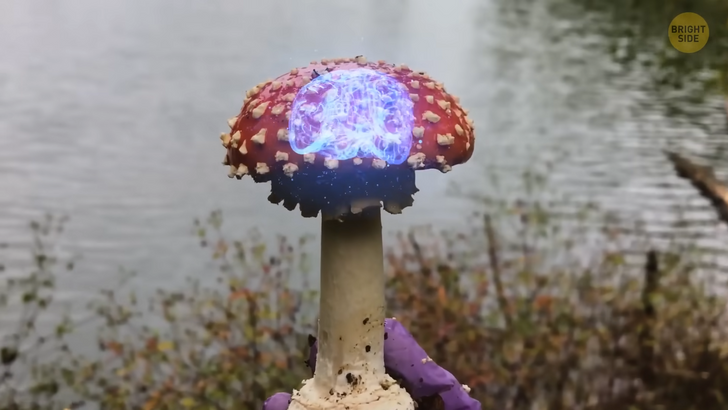
Mycelia, in particular, can gather information and forward it to their neighbors. The information they transmit can be different: from how to survive tough weather conditions, fight plant disease, and develop an “immune system” to whether there are any natural dangers around. They also have some sort of transportation services, if you like, that move crucial nutrients between interconnected plants. Now, let’s have a look at some of our planet’s weirdest — and most useful — mushrooms. Like the famous wood ear mushroom! Ancient Asian medicine used this fungus for hundreds of years. It’s said to help people breathe better and soothe their sore throats. And if we look at recent studies of this amazing fungus, it’s not far from the truth.
Wood ear mushrooms contain beta-glucans, a type of molecule that is known to work wonders for the immune system. They are edible, too, and are used in all sorts of cuisines around the world. Even though they don’t have much flavor, to begin with, their mushy consistency helps to absorb the flavor of the dishes they are put into. Next time you want to have some chewy consistency in your soup or salad, don’t forget to add wood ear mushrooms to your shopping list.
Our next fungus among us, is the lobster mushroom, which you’ll find all over North America. The peak season for this mushroom is from late summer to October. But is this really a mushroom? You’d probably think so, based on its name. But it’s actually a parasitic mold that connects to other mushrooms and covers them completely. This mold changes its host’s appearance, making it look like a red lobster tail. As for its useful properties: it’s simply delicious! On top of looking like a lobster tail, the taste is also similar. Most vegetarian recipes use this plant as a replacement for lobster rolls.
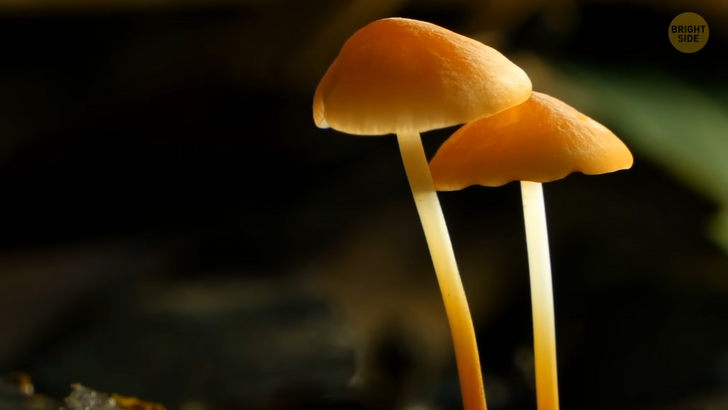
A mushroom that looks like a peanut butter blossom cookie? Enter the Rounded Earthstar, a weird-looking mushroom with a star-shaped cap and skirt. Don’t be fooled by its appetizing appearance. It’s really bitter and mostly inedible. Basket fungi, also called “stink cages,” are really easy to spot because of their hollow and structural shape. People often stumble across them in Australia and New Zealand, as well as in South Africa or Chile.
The smell of this mushroom is not something you’ll be attracted to, but it’s not poisonous at all. Technically, these fungi could be consumed, but I don’t imagine you adding them to your stir-fry. Wavy caps are interesting because of their looks and the fact that they tend to turn blueish when touched. They are mostly found in the Pacific Northwest but also in parts of Europe and Asia. Once they reach a certain territory, they really go at it. One single cluster of wavy caps in England was estimated to contain about 100,000 specimens.
I get it; a lot of mushrooms are named based on their culinary counterparts. But there’s a mushroom that’s named “the fried chicken of the woods”! Now, it’s really not a very creative name, is it? Also, please try not to confuse it with other “chicken” mushrooms out there, like the “chicken of the woods” or the “hen of the woods.” The fried chicken of the woods is small and brown. As for its taste and its similarity to real chicken, um...that’s debatable. Also, it’s really hard to distinguish between this mushroom and other poisonous species, so I’d skip it. A better option for a full vegetarian dinner is its cousin, the “chicken of the woods,” which tastes great covered in batter and deep-fried. Yummy!
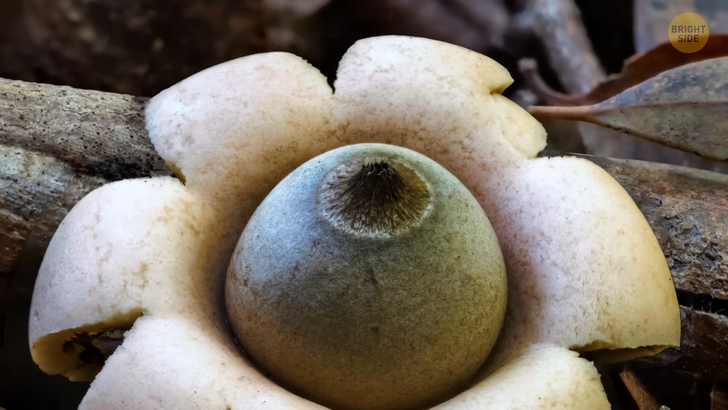
This next one is known as the lion’s mane, but also as the bearded tooth, the hedgehog, or the bearded hedgehog. The reason for all these weird nicknames is the mushroom’s stringy appearance. Those strands are spines that emerge from a single place on the mushroom and fall down, making the plant look more like a mop head if you ask me. These fungi are usually white and rounded.
The bleeding tooth mushroom can cause quite a controversy: some say it looks tasty, while some are disgusted by it. And after looking at its pictures, you’ll understand why: out of its “pores” comes a weird reddish substance. Only younger specimens look like that, though. As the bleeding tooth mushroom gets older, it starts to look pretty average, turning gray or brown. It’s found in some areas of North America, Europe, and Asia. It’s not poisonous, and, like many other mushrooms, it’s technically edible. But it tastes really bitter.
A mushroom that likes drawing attention to itself? Leave it to the veiled lady mushroom. It has a spectacular veiled skirt covered in slime. It uses this substance to attract flies and insects, which then fly away, carrying the spores of the mushroom. Apart from its elegant looks, the fungus is really delicious too. You’ll find it as an ingredient in Asian haute cuisine, in stir-fries and chicken soup recipes. That’s because it contains a lot of proteins and carbs.
Here’s a special one: a mushroom that can glow in the dark! That’s because of a little something scientists call bioluminescence. Animals and fish living in the ocean tend to have this talent more often. Three-quarters of all aquatic creatures know how to produce light. And you can see such creatures almost anywhere: close to the surface of the water or in the depths of the ocean. 2.5 miles deep — if you have a knack for numbers.
Bioluminescence translates to an organism’s ability to emit its own light. How do they manage that? Chemistry has a lot to do with it. A French biologist first discovered this phenomenon in 1887. He noticed that living organisms use two chemicals, one called luciferin and the other called luciferase. Add a bit of oxygen between these two, and — bam! Light!
Bioluminescent mushrooms emit a bright green light when the temperature around them is around 80˚F. This also lasts for only about a day. Their glow then dulls until it becomes undetectable to the human eye. These fungi like to chill around in tropical and subtropical areas, like in Asia or in the Pacific Ocean region.
The turkey tail mushroom looks exactly like you’d imagine. But, it’s even more intricate than the famous behind of its namesake. These mushrooms sport a large array of colors, from rust-brown to gray and black. But the whole palette can vary based on a mushroom’s location and age. Some even have lush green and copper rings, making them look like rainbow-colored shells.
What does the brain mushroom look like? Well, take a guess... like the human brain, obviously! It’s mostly found in Britain and Ireland, but you can sometimes see it in other parts of Europe and in North America. Along with its gruesome appearance, this mushroom is also poisonous and should not be consumed.

This blue and purple mushroom is called the indigo milk cap. Out of it comes indigo-colored “milk,” which is actually latex. You’ll see this substance ooze out whenever the fungus is cut or broken. It’s found in forests of eastern North America, East Asia, and Central America.
You can also tell its age based on the hue: the bluer the body of the mushroom is, the younger the specimen. This mushroom is edible, too, but it really needs to be cooked fresh.











